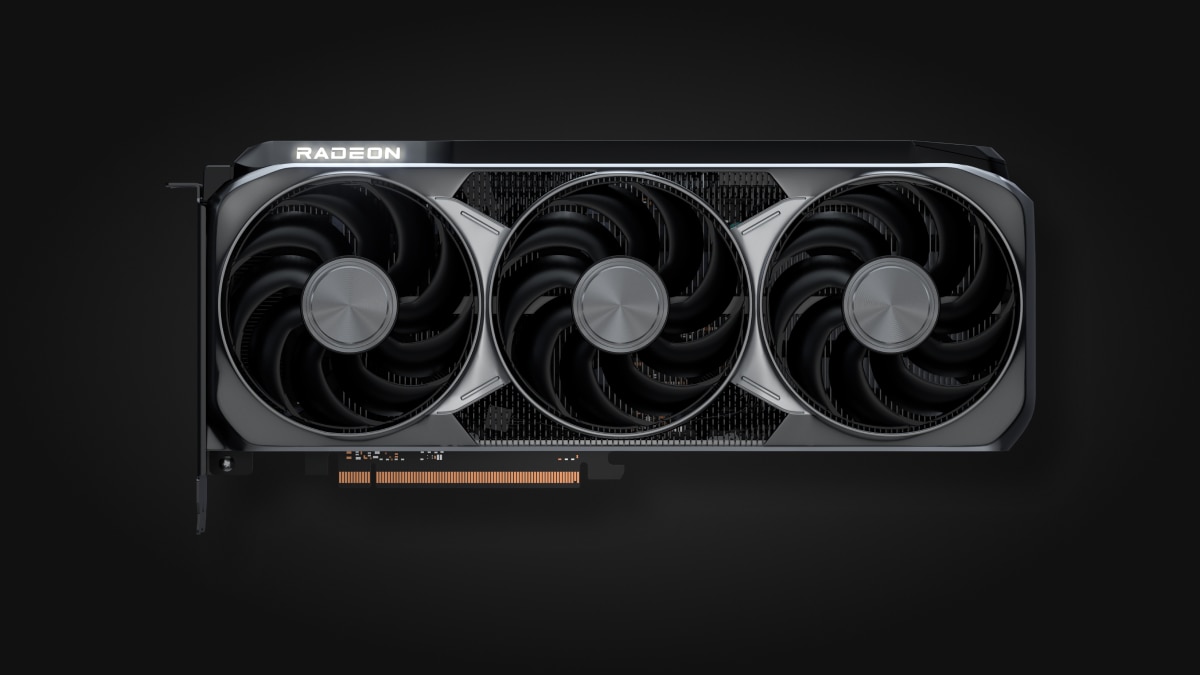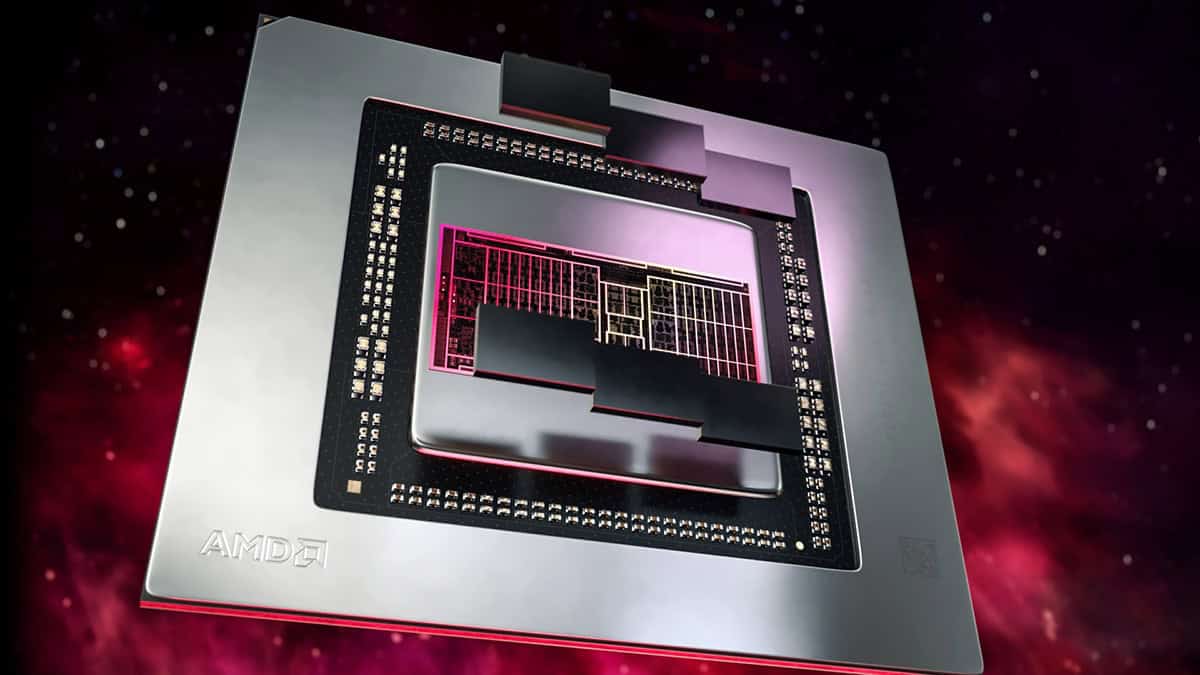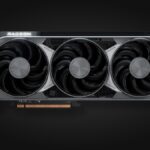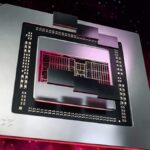AMD’s RDNA 4 architecture has officially arrived with the launch of the Radeon RX 9000 series, and early benchmarks suggest that AMD is no longer just chasing the competition—it’s shaping up to be a serious contender, especially in the mid-to-high-end GPU segment. The RX 9070 and RX 9070 XT are the first cards to debut under the RDNA 4 banner, and they’re turning heads with their mix of performance, efficiency, and pricing.
Real-World Performance Benchmarks

AMD’s Radeon RX 9000 series is aimed at gamers targeting 1440p and 4K resolutions, and the results so far are impressive:
| Game Title | RX 9070 XT Avg FPS (4K Ultra) | RTX 4080 Super Avg FPS (DLSS Off) |
|---|---|---|
| Call of Duty: Black Ops 6 | 99 FPS | 102 FPS |
| Cyberpunk 2077 (No RT) | 85 FPS | 87 FPS |
| Forza Motorsport | 122 FPS | 119 FPS |
In rasterized workloads, the RX 9070 XT performs nearly on par with NVIDIA’s RTX 4080 Super, particularly when DLSS is turned off. Meanwhile, the RX 9070 slots just beneath the XT and offers performance in line with the RTX 4070 Ti, giving AMD a strong value proposition in the $500–$600 range.
What’s New in RDNA 4?
RDNA 4 represents a significant architectural leap from RDNA 3, not just in raw power, but in how it handles modern graphics workloads:
- Enhanced Compute Units: Each CU now includes dual SIMD32 pipelines and supports improved matrix operations, optimizing both gaming and AI/ML tasks.
- Third-Gen Ray Tracing Cores: AMD claims up to 2x better ray tracing performance over RDNA 3, thanks to faster BVH traversal and more efficient ray-box intersection logic.
- AI Accelerators 2.0: With up to 8x the AI throughput, these cores power FidelityFX Super Resolution 4 (FSR 4), AMD’s answer to NVIDIA’s DLSS 4.0.
The performance bump is particularly noticeable in games that support ray tracing or use AI-enhanced upscaling, making RDNA 4 a well-rounded upgrade beyond just frame rates.
Pricing, Specs, and Release Info
AMD has priced the RX 9000 series to undercut NVIDIA while delivering competitive performance:
| Model | MSRP | VRAM | Memory Type | Launch Date |
|---|---|---|---|---|
| RX 9070 | $549 | 16GB | GDDR6 | March 6, 2025 |
| RX 9070 XT | $599 | 16GB | GDDR6 | March 6, 2025 |
Both models support PCIe 5.0, include standard 8-pin power connectors, and have optimized thermals to fit in a wide range of builds without requiring exotic cooling.
DLSS vs. FSR 4: The Upscaling Battle
While NVIDIA still leads in AI upscaling with DLSS 4.0, AMD’s FSR 4 is a massive leap forward and finally offers a comparable experience—especially in games that offer native support for both. FSR 4 works across a wider range of GPUs and doesn’t require proprietary cores, which gives AMD an edge in flexibility.
That said, DLSS still offers advantages in motion clarity and reconstruction quality in specific scenarios, particularly when paired with Frame Generation. But the gap is narrowing.
Competitive Landscape
Here’s how AMD’s current offerings stack up against their direct NVIDIA competitors:
| AMD GPU | NVIDIA Equivalent | Rasterization Performance | Ray Tracing | AI Upscaling |
|---|---|---|---|---|
| RX 9070 | RTX 4070 Ti | Comparable | Slightly lower | FSR 4 catching up |
| RX 9070 XT | RTX 4080 Super | Nearly identical | Competitive | FSR 4 competitive |
Who Should Buy It?
Gamers looking to upgrade for native 4K or high-refresh 1440p gaming without spending north of $700 have solid options in RDNA 4. AMD’s value-driven strategy, paired with architectural improvements and driver maturity, positions the RX 9000 series as a legitimate choice in 2025.
If your priority is rasterization performance, energy efficiency, and competitive pricing, the RX 9070 and RX 9070 XT are among the best picks currently available.
Key Takeaways
- RDNA 4 RX 9000 cards rival top Nvidia GPUs in many real-world tests
- Features like AI acceleration and ray tracing enhance gaming
- Competitive pricing makes RX 9000 a strong option for gamers
RDNA 4 Benchmarks and Real-World Performance
AMD’s RDNA 4 graphics cards push hardware efficiency and aim to raise performance in both standard rasterized games and advanced features like ray tracing and AI-supported upscaling. Benchmark results highlight solid gains over previous generations and show direct competition with Nvidia cards in many titles.
Test Setup and Methodology
The benchmarking team used a system with a Ryzen 9 7950X processor, 32GB DDR5 RAM, and PCIe 4.0 NVMe storage to keep bottlenecks to a minimum. All graphics cards, including the RX 9070 XT, RX 9060 series, RX 7900 XTX, and RTX 4060, ran on the latest drivers.
Testing covered recent AAA games such as Cyberpunk 2077 and Hogwarts Legacy, along with synthetic benchmarks for consistency. Tests were run at 1440p and 4K resolution, with high settings for image quality and ray tracing when available. Frame rates (FPS), frametime consistency, and thermal behavior were logged during real gameplay sequences.
Gaming Experience and FPS Analysis
The RX 9070 XT and RX 9000 series showed clear improvements in FPS compared to the previous RX 7900 GRE and RX 7900 XTX models, especially at 1440p. In many titles, the RX 9070 XT maintained frame rates above 120 FPS at 1440p high settings and kept over 70 FPS at 4K.
When compared with the RTX 4060, the RX 9060 series delivered up to 20-30% higher average FPS in certain games. In Cyberpunk 2077, for example, the RX 9070 XT ran smoothly even with demanding visuals. The cards provided stable frame generation and reduced stutters, making them suitable for competitive play and demanding single-player experiences.
| GPU | 1440p FPS | 4K FPS |
|---|---|---|
| RX 9070 XT | 125 | 73 |
| RX 9060 | 110 | 65 |
| RX 7900 XTX | 113 | 69 |
| RTX 4060 | 89 | 49 |
Ray Tracing Performance Comparison
The RDNA 4 GPUs showed stronger ray tracing, with the RX 9070 XT outperforming its predecessors by around 18% in ray tracing benchmarks. On average, the new cards delivered smooth frame rates even with ray tracing enabled, though Nvidia cards like the RTX 4060 still performed better in some scenarios.
In actual games, players saw around 53% faster performance at 4K and 49% faster at 1440p in ray-traced titles compared to older hardware. Improvements also came from support for FSR 4 upscaling and machine learning, further bridging the gap with Nvidia’s DLSS feature set.
Image Quality Improvements and Machine Learning Features
RDNA 4 brought higher image quality through better anti-aliasing and sharper visuals, even when using performance-enhancing techniques. FSR 4 upscaling improved edge clarity and reduced artifacts, making high resolutions playable with less performance impact.
Machine learning powered features like frame generation and neural rendering gave smoother gameplay by predicting frame data between real frames, reducing motion blur. These updates allowed gamers to enjoy demanding visuals at higher settings without the usual drop in FPS, enhancing immersion and responsiveness across various titles.
Comparing RX 9000 Series and Nvidia GPUs: Specs, Efficiency, and Pricing
AMD’s Radeon RX 9000 graphics cards bring noticeable changes over earlier generations. Several updates in architecture, memory, and energy use set RDNA 4 apart from Nvidia’s current GPUs, especially in models like the RX 9070 and RTX 5070.
Architectural Improvements and Key Specifications
RDNA 4 uses a refined architecture that focuses on rasterization and practical gaming performance. AMD has updated the compute units and introduced features like cooperative vectors. This aids in specific graphics workloads.
Nvidia’s Ada Lovelace GPUs feature advanced tensor cores designed for AI and DLSS but AMD centers more around improving frame rates in traditional games. For example, the RX 9070 is about 17% faster than the RTX 5070 for 4K gaming without upscaling in some tests, putting real-world gains ahead of features that need extra software or support.
Below is a basic comparison:
| Model | Compute Units | Ray Tracing | AI/Tensor | FP8 Support |
|---|---|---|---|---|
| RX 9070 | Updated | Yes | No | No |
| RTX 5070 | New Gen | Yes | Yes | Yes |
GDDR6 Memory, VRAM, and Infinity Cache
AMD’s RX 9000 series continues using GDDR6 memory, paired with more VRAM in high-end models like the RX 9070. Infinity Cache—unique to AMD—still helps bandwidth, especially at 4K.
Nvidia’s recent cards, such as the RTX 5090 and RTX 5080, favor high-bandwidth GDDR6X memory for wider throughput. However, larger VRAM on AMD GPUs can matter more for games that use many large textures. AMD still doesn’t match Nvidia’s GDDR6X speeds, but Infinity Cache partly narrows that gap in real use.
| Model | VRAM | Memory Type | Cache |
|---|---|---|---|
| RX 9070 | 16-20GB | GDDR6 | Infinity Cache |
| RTX 5090 | 24GB | GDDR6X | L2 Cache |
| RTX 5080 | 16GB | GDDR6X | L2 Cache |
Efficiency and Power Consumption Insights
Power efficiency is a major focus for AMD’s RDNA 4. The RX 9000 series shows lowered wattage under load, especially compared to earlier AMD cards. Tests hint at better power use per frame than some Nvidia RTX models, though results depend on the specific game and settings.
Nvidia continues to push high performance but often at increased power draw for models above the RTX 5070. AMD’s RX 9070 can run with a lower TDP, helping thermal performance and making it fit for compact PC builds. This shift puts less stress on cooling and can cut down noise.
MSRP, Pricing Trends, and Overclocking Potential
The RX 9000 cards launch with a starting price point of around $549 for some models. High-end cards like the RX 9070 are expected to target the $599 range, challenging Nvidia’s mid- and high-tier offerings. Nvidia’s RTX 5070 and 5080 sit in a similar price bracket, but premiums often apply.
MSRP gives only a rough guide—market demand and supply can heavily change real prices. Overclocking is possible for both brands, but AMD recently focused more on stable out-of-the-box speeds, while Nvidia leaves more headroom in higher-end chips. Extra value for overclockers depends on cooling and silicon quality, with reliable boosts mainly seen in premium SKUs.
Frequently Asked Questions
AMD’s RX 9000 series has introduced new architecture aimed at faster speeds, better power use, and improved ray tracing. Reviews compare these cards with Nvidia’s latest GPUs in price, efficiency, and real-world gaming tests.
What performance improvements do the RDNA 4 GPUs offer over the previous generation?
The RDNA 4 GPUs show noticeable gains compared to RDNA 3. The RX 5070 Ti outpaces the 7900 GRE by about 29% for 4K rasterization and 19% overall at this resolution.
AI processing also runs faster thanks to updates in the new architecture, leading to smoother frame rates in modern games. Load times for large scenes are reduced as well.
How do the RX 9000 series graphics cards compare to their Nvidia counterparts in terms of power efficiency?
The RX 9000 series continues to use standard 6- and 8-pin PCI Express power connectors, making swaps easy. Power use has improved versus previous AMD cards, but still trails some Nvidia models.
In tests, Nvidia’s current GPUs remain ahead in power efficiency at the high end, but the gap has narrowed.
What are the projected price-to-performance ratios for AMD’s RDNA 4 series vs. Nvidia’s offerings?
AMD’s RX 9000 series launches with starting prices around $549. Early benchmarks show that, in some tests, the price-to-performance ratio slightly favors AMD versus Nvidia, especially in midrange cards.
Buyers can expect competitive performance at lower prices, though Nvidia may retain a slight edge in top-tier ray tracing and efficiency. For more detailed numbers, see Tom’s Hardware’s analysis of AMD RDNA 4 and Radeon RX 9000-series GPUs.
What advancements in ray tracing capabilities are present in AMD’s latest GPU lineup?
The RDNA 4 architecture brings faster and more stable ray tracing support compared to RDNA 3. AI-powered upscaling now provides smoother visuals during ray traced scenes.
Performance still lags slightly behind Nvidia’s leading cards in complicated ray tracing scenarios, but the difference has shrunk compared to older AMD graphics cards.
How do professional reviews and gaming benchmarks rate the RX 9000 series against Nvidia’s comparable models?
Early reviews and benchmarks show that the RX 9000 series competes well with Nvidia’s latest in most rasterization tests. In 4K gaming, AMD’s cards now outperform last-generation competitors by a safe margin, but don’t always beat Nvidia’s top tier.
Some reviewers highlight the RX 9000’s value for money and solid driver support. Tech sites rate consistency and stability as improved.
What are the expected impacts of the RX 9000 series on the graphics card market share?
AMD’s updated lineup is expected to pressure Nvidia’s market share in the mainstream and upper midrange segments. Competitive pricing and reliable availability give AMD an edge with budget-minded buyers.
Enthusiasts and early adopters may still lean toward Nvidia for high-end performance and power savings, but AMD’s share should grow if supply remains steady. For user discussion of market impact, visit Reddit’s comments on AMD RDNA 4 and RX 9000.







